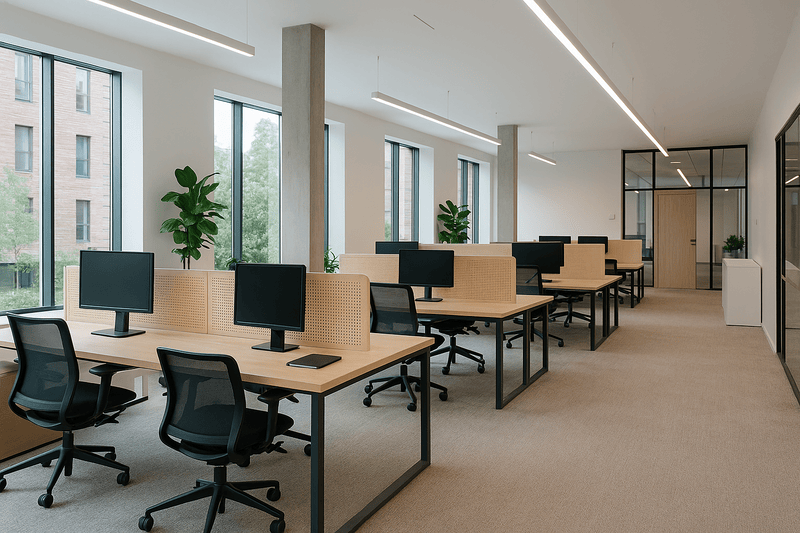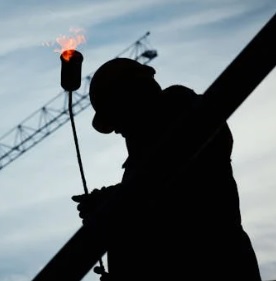
A well-designed office space does more than impress visitors—it shapes how teams interact, how businesses operate, and how people feel at work. As businesses continue to adapt to hybrid models, flexible scheduling, and changing client expectations, the role of thoughtful office fitouts and design has never been more crucial. The right workspace layout doesn’t just look good—it enhances productivity, encourages collaboration, and supports overall wellbeing.
In today’s highly competitive business environment, office spaces are no longer just about square footage. They are strategic tools that communicate brand identity, influence staff morale, and directly impact daily performance. That’s why investing in professional fitout and design services is no longer seen as an optional luxury but a necessary step toward operational success.
Function Meets Form: Why Design Strategy Matters
Many assume that office design is primarily about visual upgrades. In reality, effective office fitouts integrate strategy, ergonomics, compliance, and user experience. They begin with understanding how a company functions—who uses the space, how communication flows, where storage is needed, and which zones require privacy or openness.
This is where experts in the field offer real value. Office Fitouts & Design – Leithal Designs brings together form and function by tailoring every project to support business goals. From open-plan workspaces to private meeting zones and breakout areas, their approach ensures every element serves a purpose.
An intelligently planned workspace reduces friction. It shortens the distance between collaboration points, encourages spontaneous teamwork, and provides quiet zones for deep work. And it does all this while making the space feel unified and brand-aligned.
The Impact on Staff Productivity and Morale
There is growing evidence that physical workspaces directly influence employee engagement. Design choices such as natural light, acoustic control, flexible furniture, and ergonomic setups can reduce fatigue, support mental clarity, and even improve physical health. When employees feel comfortable in their environment, they’re more likely to focus, collaborate, and take ownership of their work.
Workplace design is especially critical in attracting and retaining talent. Younger professionals, in particular, value spaces that support wellbeing and flexible ways of working. Fitouts that include adaptable seating, wellness areas, quiet pods, or creative nooks send a clear message: this company invests in its people.
To explore more on how workplace trends are evolving, Blogrip’s post on the future of hybrid workspaces gives further insights into what modern teams expect from their environments.
Sustainable Design Is No Longer Optional
Sustainability in office design isn’t just about reducing carbon footprint—it’s also about longevity, cost-efficiency, and wellness. Using eco-friendly materials, energy-efficient lighting, and waste-reducing layouts contributes to both environmental goals and long-term savings.
A sustainable fitout also considers lifecycle thinking: can furniture be reconfigured or reused? Are materials low-VOC and safe for indoor use? Can the layout accommodate future growth without major disruption?
Working with specialists like Leithal Designs for professional office fitouts & design allows businesses to make informed decisions in this area. Their process includes material sourcing, compliance with green standards, and design choices that reduce operational overhead without compromising on aesthetics.
Branding Through Space
An office should tell your brand story without a single word spoken. From the reception area to the boardroom, each zone can reinforce your identity—through colour schemes, signage, materials, and layout. Whether you run a legal practice, tech startup, or design agency, your workspace can project the values that matter most to you: professionalism, creativity, inclusivity, or innovation.
Branding through design doesn’t mean slapping a logo on the wall. It’s about subtle, thoughtful choices—textures that reflect craftsmanship, lighting that sets a particular tone, or workspaces that promote your unique culture. These elements help foster connection not just internally but also with clients and visitors.
For additional guidance on brand expression through interiors, the Blogrip article on office storytelling through design explores real-world examples from leading firms.
Adapting to Flexible and Hybrid Models
The pandemic reshaped how we think about workspaces. Static desk arrangements have given way to hot-desking, activity-based working, and zones that cater to remote collaboration. Fitouts must now accommodate video conferencing tech, mobile workstations, and multipurpose areas.
Designers who understand this shift can integrate smart storage, modular furniture, and hybrid tech into a space without making it feel disjointed. They can also futureproof a space, ensuring that as needs change, the infrastructure supports new workflows without costly reconfiguration.
This agility is where Expert office fitouts & design available now becomes especially valuable. Their team builds flexibility into the foundation of every design—ensuring the office remains an asset rather than a constraint as teams grow or adapt.
Compliance and Safety: The Invisible Priorities
Great office design must meet strict building codes, accessibility standards, and health regulations. This includes spacing for emergency exits, proper lighting levels, ergonomic seating, acoustic control, and sufficient air circulation.
Non-compliance isn’t just a risk—it can result in expensive fines or workplace injuries. A professional fitout partner ensures your space doesn’t just look great but meets every legal requirement. These unseen aspects are just as vital as the furniture and finishes.
ROI: Viewing Fitouts as Business Investments
It’s tempting to see office fitouts as purely cosmetic. But when viewed as a business investment, their value becomes clear. A well-designed space may increase staff retention, attract higher-calibre clients, streamline operations, and reduce absenteeism. It can even increase the value of your commercial lease or property.
When budgets are tight, smart design allows you to get more from the space you already have. This might involve reconfiguring underused areas, integrating dual-purpose zones, or upgrading lighting and acoustics for better output without major structural change.
Why Work With Specialists?
Fitouts involve coordination between builders, electricians, IT professionals, designers, furniture suppliers, and more. A project manager who understands the intricacies of commercial design can oversee the timeline, budget, and execution with minimal disruption to your operations.
Working with an experienced team like Office Fitouts & Design – Leithal Designs means you gain access to this end-to-end service. From concept to completion, every step is managed efficiently—keeping your business moving while the transformation happens behind the scenes.
Whether it’s a full office buildout or a smart redesign of an existing space, their approach focuses on listening first, then designing spaces that make daily work smoother and more rewarding.
Final Thought
Office fitouts are no longer about fitting desks into square metres. They’re about creating environments that support human needs, express brand identity, and improve business outcomes. When planned strategically and executed professionally, they deliver tangible results across staff wellbeing, performance, and reputation.
If your office isn’t supporting your team’s best work—or isn’t reflecting who you are as a business—it may be time for a refresh. Consider exploring how Office Fitouts & Design – Leithal Designs can help create a smarter, more inspiring workplace tailored to your goals.

Leave a Reply